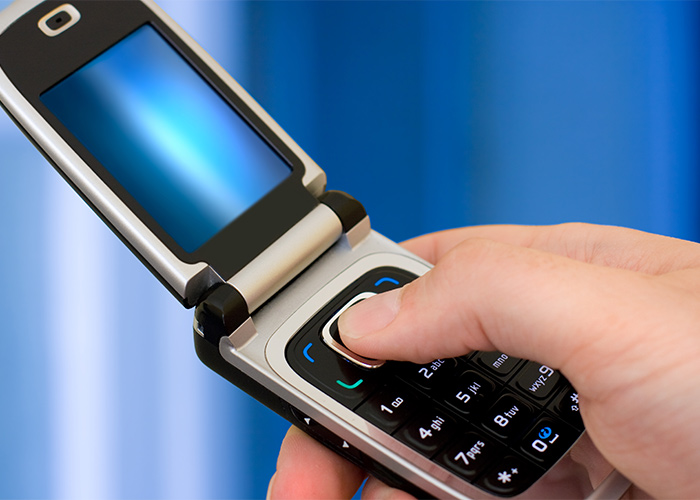Because I have a granddaughter who has just received her first cell phone, I became interested in learning more about the potential health risks associated with the use of cell phones and in spreading current information to promote the safer use of this new body “appendage.”
According to the Environmental Working Group’s website, the United States Federal Communications Commission’s (FCC) current SAR (Specific Absorption Rate) standards for cell phones were developed in 1996, based upon a large man’s head and body: “These standards do not address exposure to fetuses, children, women, or metallic objects worn on the body that influence the absorption of radiation (such as) metallic eye glasses, earrings, or dental braces.”

By 1996, Motorola had developed a $2000 flip phone called the StarTac, the earliest phone with the ability to send text messages. The name reminds me of the TV series, Star Trek, when we were looking into the future and could never have imagined how this new invention would evolve. This phone was expensive and its battery life allowed you to talk for about 3 hours. Today’s phones are less expensive, widely used, and some have “sport dual processors and batteries” that allow you and your children to talk up to 20 hours before needing a recharge!
I may not know what dual processors are, but I do know “the electromagnetic frequency (EMF) burden on the population is increasing” and that mobile devices are “an open source of EMF and (offer) no protection for valuable human organs” (as noted by Professor Yuri Grigoriev, Chairman of the Russian National Committee on Non-Ionizing Radiation Protection and an advisor to the World Health Organization on EMF).
I also know that government agencies sound like they are here to serve you, the consumer, but unfortunately, there is often a conflict of interest between the industry and the people they are here to protect, as described by a Harvard University writer in the article, “Captured agency: How the Federal Communications Commission is dominated by the industries it presumably regulates”.
Today there are billions of cell phones and mobile devices in use. Our smartphones allow us to take pictures, make movies, send email, pay with online apps, monitor the news and weather, navigate us to our next destination, identify the stars, listen to music, search the Internet, and play games.
The Environmental Working Group (EWG) has “suspend(ed) publication of the EWG Guide to Cell Phone Use until the FCC makes the decision to require cell phone makers to . . . disclose data about device and network emissions.” The FCC spoke about reviewing these standards in 2013 but the EWG’s comment that this would probably “proceed at a glacial pace” has been much closer to the truth.
Studies conducted by several international scientific teams “have raised troubling concerns about the possible association between heavy cell phone use and serious health dangers.” The 1996 FCC standards allowed for “20 times more radiation to reach the head then the body.” These standards were based on “short-term cell phone use,” not the hours of exposure we see happening today and on the thermal (not the non-thermal) effects of cell phone exposure.
Dr. Grigoriev believes that the long-term effect of non-thermal EMF exposure “throughout human life increases the risk for adverse biological effects,” especially the health risks related to mobile phone use by children. Even WHO has voiced its concern that “children are not the same as adults.”
Some of Dr. Grigoriev’s concerns are as follows:
- Electromagnetic activity is higher in a child’s brain than that of an adult.
- A child’s head is smaller and the skull bone is thinner than that of an adult.
- The distance between the phone antenna and a child’s brain is shorter, and the ear shell is softer and has almost no cartilage compared to an adult brain.
- A child’s brain absorbs 2 to 3 times more radiation than the adult brain and is more sensitive to the effects of EMF.
- Repeated exposure to EMF, as a child, may adversely affect cognitive and mental abilities, memory, attention span, sleep, stress reactions, and increase epileptic readiness.
- Duration of exposure as a young child in today’s world, allows for a larger accumulation of adverse reactions over his/her lifetime than the modern adult. Six countries have taken steps to limit cell phone use by children.
- Pregnant women must also consider the effects of exposing their fetus to EMF.
To help limit your exposure to EMF from mobile devices, here are some simple steps you can take:
- Do not carry cell phones in your pocket or on a belt clip. Your cell phone sends out intermittent signals to cell towers, even when not in use.
- Remove TVs, computers, and other mobile devices from the bedroom. Do not allow your child to sleep with a cell phone in his/her bed or place the cell phone under a pillow.
- Turn off your Wi-Fi router at night to reduce radio frequency levels in your home.
- Text more, talk less.
- Use a headset or speaker while talking on a cell phone. Because some wireless headsets emit low level radiation, even when not in use, remove them from your ears.
- Whenever possible, make and take calls only when you have a strong signal. Research shows weaker signals increase exposure to radiation.
- Limit your child’s mobile phone use as a toy. If playing a game, put the phone on airplane mode.
- Radiation shields reduce the connection quality but force the phone to emit more radiation to transmit a call.
References:
https://www.ewg.org/research/cellphone-radiation. Accessed 2 October 2018. “EWG’s Guide to Safer Cell Phone Use. 2017.
https://www.ewg.org/research/cellphone-radiation. Accessed 2 October 2018. “Yet Another Reason For Your Kids to Unplug?”
“Health Risks From Cellphone Radiation” by Olga Naifendo, Ph.D. Senior Science Advisor For Children’s Environmental Health. July 11, 1018.
https://www.saferemr.com. Accessed 2 October 2018. “What’s Wrong With Cell Phone Radiation Exposure Limits?” By Joel Moskowitz, Ph.D.
Center for Family and Community Health, School of Public Health, University of California, Berkeley. September, 2017.
